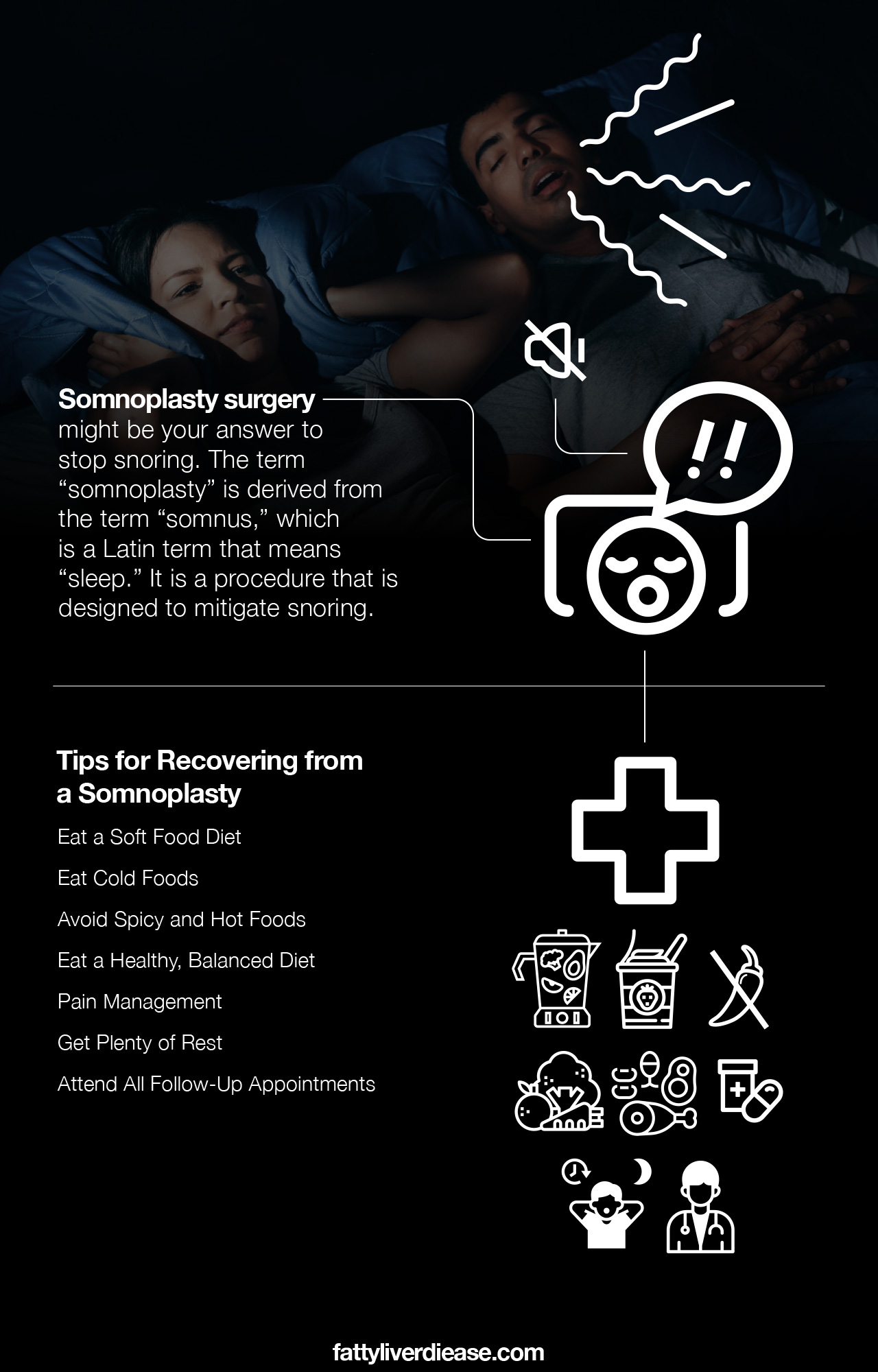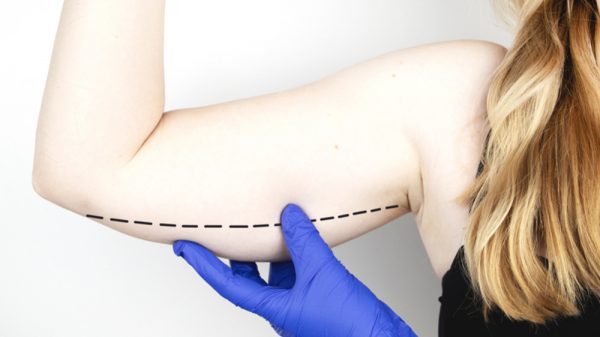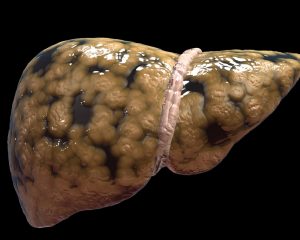We all snore from time to time, due to temporary circumstances like a stuffy nose or unusual sleeping position. This periodic snoring is generally not an issue for your well-being. However, habitual snoring may be linked to more serious health issues. Even if chronic snoring is not always a bother to the snorers themselves, it can affect the sleep quality of anyone in close proximity. If you have tried all of the remedies for snoring to no avail, then your doctor may have suggested a somnoplasty to address the issue.
What exactly is a somnoplasty and what can you expect from the procedure and the recovery process? Read on to find out the answers to your questions here.
What Causes Snoring?
Snoring occurs during sleep when air is pushed forcefully over the structures and tissues in the airways. As a result, the tissues surrounding the airway vibrate and create a loud, rough sound that we identify as snoring.
Snoring can be caused by a multitude of factors. Here are a few factors that contribute to snoring.
- Narrow airways: Some people genetically have airways that are narrow, which increases the chances of snoring.
- Deviated septum: Sometimes, a deviated septum may contribute to snoring. A deviated septum means that the bony structure dividing the nasal passage protrudes to one side or the other, which can cause issues with normal airflow.
- Large soft palate tissues: The soft palate is made up of the tissues towards the back of the throat that aids us in swallowing and protecting the airway while eating. The uvula is also a part of the soft palate, and a stretched uvula can worsen snoring. When any of the soft tissues are enlarged, they can impede normal airflow and cause partial upper airway obstruction. This results in vibrations during inhales or exhales, resulting in the sound that we identify as snoring.
- Tonsil enlargement: Having large or inflamed tonsils can be an additional blockage around the airway, contributing to snoring.
- Obesity: Carrying excess fat can cause the tissues in and around the neck and throat to become enlarged, which contributes to snoring.
- Chronic nasal obstruction: Continuous nasal congestion or inflamed turbinates may also contribute to snoring.
- Alcohol consumption: Drinking can increase the risk of snoring since alcohol causes the muscles and tissues around the airway to become more relaxed.
- Sleep medicine: Some sedating sleep medications are connected to snoring. If your medication is the cause of your snoring, your physician will prescribe alternative medication or treatments that provide the same therapeutic benefits without unwanted side effects.
Snoring can also be associated with a condition called obstructive sleep apnea. When snoring is connected to this condition, it can have serious health repercussions if left untreated. Unlike normal snoring, sleep apnea causes the momentary cessation of breathing, which causes oxygen levels to dip. This can happen many times throughout the night and can lead to serious side effects like irritability, exhaustion, daytime sleepiness, and depression. Sleep apnea is even connected to other conditions like high blood pressure and heart disease.
What Is a Somnoplasty?
Are you looking for surgery to stop snoring? Undergoing a somnoplasty might be your answer. A somnoplasty is a procedure that is designed to mitigate snoring. The term “somnoplasty” is derived from the term “somnus,” which is a Latin term that means “sleep.”
Individuals who have enlarged soft palate tissues, tonsils, or tongue base in the upper airway tend to benefit the most from the somnoplasty procedure. The somnoplasty procedure reduces tissue volume, reducing the friction between air and tissue.
When to See a Doctor
If you are concerned about snoring or your partner has expressed concern, it’s a good idea to make an appointment with your general practitioner. Your doctor will evaluate your symptoms and likely refer you to an ear, nose, and throat (ENT) doctor for further evaluation. An ENT doctor is a specialist in otolaryngology and performs surgical treatments that address issues related to the head and neck.
The ENT will likely administer a sleep study, to gain an understanding of the extent of your snoring and any other breathing disorders or sleep disorders you may have. The doctor will also evaluate the structures of your palate and nose to see if any enlarged tissues are causing you to snore. If your soft palate is the primary culprit for snoring and other treatment options are ineffective, your ENT may approve you for a somnoplasty.
What to Expect During a Somnoplasty Surgery
You will not need to be put under general anesthesia during a somnoplasty. Instead, the surgeon will administer a local anesthetic. Using radiofrequency heat energy, the surgeon will then complete a tissue reduction of the soft palate tissues, uvula, tonsils, or back of the tongue.
Radiofrequency energy works by targeting the tissues below the mucosal layer in the upper airway. Treatment with radiofrequency energy creates scarring and stiffening. The treated tissue becomes firmer and smaller and helps reduce upper airway obstruction that causes snoring. The surgical procedure takes less than an hour.
How much does snoring surgery cost? In some cases, the procedure may be covered by insurance, so make sure to call your insurance company if you’re considering undergoing a somnoplasty. Without insurance, the procedure may cost around $500. However, it’s important to check with your surgeon, since costs can vary by provider. The cost of surgery may also depend on your individual case and specific needs during surgery.

What to Expect After the Procedure
The somnoplasty surgical procedure is an outpatient procedure, meaning you will usually be able to leave the same day that you receive the operation. Since you will have only had local anesthesia, you won’t need to recover from general anesthesia. By the following day, you will most likely be able to resume most of your normal daily activities. However, it may take a month for your upper airways to reach a full recovery. Keep in mind that recovery times vary from person to person.
The success rate of a somnoplasty tends to be high, though some patients may benefit from multiple procedures to achieve desired results.
Serious complications following a somnoplasty are very rare. However, if you do have any symptoms of bleeding or infection, it’s important to seek medical attention immediately.
Tips for Recovering from a Somnoplasty
If you’ve recently undergone a somnoplasty procedure, it’s helpful to have tips for supporting the healing process.
1. Eat a Soft Food Diet
For a couple of days following surgery, it will be very helpful to restrict your diet to soft foods. When swallowing, food brushes against the soft palate and surrounding tissues. Smoothies, shakes, toast and eggs, yogurt, and cooked veggies are excellent soft food options.
2. Eat Cold Foods
If the back of your throat is irritated, you might benefit from eating cold foods. Cold temperatures can be soothing for the throat and help reduce inflammation. Foods like frozen yogurt and shakes made with frozen fruit are great options.
3. Avoid Spicy and Hot Foods
Spicy food can increase irritation in the back of your throat following surgery, while hot foods can cause further injury. Avoid both spicy and hot foods until your throat has recovered sufficiently.
4. Eat a Healthy, Balanced Diet
The foods you eat can impact your healing process following a somnoplasty. The best foods to eat after surgery are those that support your immune system to fight against infection and heal damaged tissues. Here are a few key foods you should incorporate into your post-procedure diet:
- Fruits and veggies: Fresh produce supports the body in making a full recovery after surgery. The micronutrients present in fruits and vegetables support the immune system by reducing oxidative stress and inflammation. Plus, you can easily prepare fruits and vegetables with a soft texture. Cooked sweet potatoes, canned veggies, and applesauce are a few examples.
- Protein: Protein is one of the most important foods for healing since it offers amino acids, which the body uses in many cellular processes. In particular, the body requires optimal ratios of essential amino acids on a daily basis, to expedite healing. Ideal protein sources that offer all of the essential amino acids include animal products like meat, dairy, and fish. If you follow a plant-based diet, try adding a high-quality essential amino acid supplement to your water or coffee.
- Fiber: Eating plenty of fiber from whole grains, beans, fruits, and vegetables can help promote a healthy gut microbiome as well as lower levels of systemic inflammation. Fiber’s anti-inflammatory effect can help support the immune system during recovery.
5. Pain Management
Thankfully, the somnoplasty procedure is relatively pain-free. Following the surgery, you may experience some soreness towards the back of your throat. Follow your surgeon’s guidelines for pain medication. Most surgeons will suggest that you take over-the-counter medications like Tylenol. Steer clear of ibuprofen, since non-steroidal anti-inflammatory drugs tend to be associated with a higher risk of bleeding following surgery.
6. Get Plenty of Rest
Making sure you get a good night’s sleep on a regular basis helps your body repair from illness and injury.
7. Attend All Follow-Up Appointments
After any surgery, you will need to attend follow-up appointments to check in with your surgeon. This allows the doctor to evaluate your progress. After a somnoplasty, the surgeon will assess how well your throat is healing and ask you about how you feel and whether your snoring has improved. The surgeon can evaluate whether you need another procedure.
Conclusion
The somnoplasty procedure can provide relief for snorers and their partners, and it’s a quick and relatively painless procedure. If you snore, check in with your doctor to learn about your treatment options.























